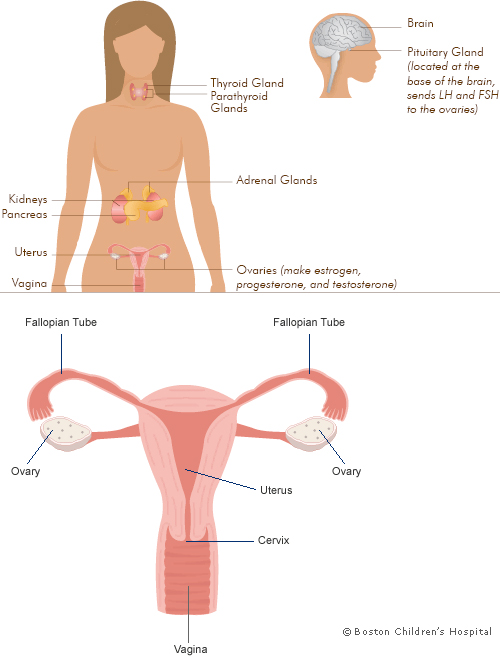 When a guy goes through puberty, he’ll experience various changes in his body. He’ll grow hair in places he didn’t have it before, his voice will change, his penis and testicles will grow, and he might develop acne. But what about girls? Have you ever wondered goes on with girls’ bodies when they go through puberty?
When a guy goes through puberty, he’ll experience various changes in his body. He’ll grow hair in places he didn’t have it before, his voice will change, his penis and testicles will grow, and he might develop acne. But what about girls? Have you ever wondered goes on with girls’ bodies when they go through puberty?
Do girls start puberty at the same age as guys?
Girls typically start puberty between the ages of 9 and 12, and guys normally start puberty between ages 10 and 13. However, exact time that pubertal changes occur varies for each individual.
Why do girls grow breasts?
Breast development (also called “thelarche”) is often the first sign of puberty for many girls. As a girl’s body starts to develop, a small bump (called a breast bud) begins to grow under each areola (the dark area around the nipple) and nipple. The “buds” continue to grow, and eventually form breasts, which are made up of fatty tissue and mammary glands. The mammary glands serve a very important purpose – when a woman is pregnant, they produce milk that a woman can feed to her baby.
How come some girls have bigger breasts than others?
Breast size is primarily determined by heredity (a characteristic or trait that is passed down by genes). If a girl’s mom or grandmother has large breasts, she may be more likely to have large breasts when she grows up, and if a girl’s family members have small breasts, she may be more likely to have small breasts. Breast size can also increase or decrease if a girl gains or loses a lot of weight, but for the most part the size of her breasts will stay the same once she’s finished puberty, which takes about 5 years. During the teen years, girls’ breast sizes will vary depending on how early (or late) they start to develop.
Do girls get hairy too?
Yes. Girls start to grow hair under their arms and in their pubic area just like guys do. At first there may only be a few thin hairs, but it will eventually grow in to be thicker and curlier.
What is menstruation?
When a girl reaches puberty, her ovaries (small egg-containing organs that are located on both sides of the uterus) make hormones that cause menstrual periods. The pituitary gland (located in the brain) releases chemical messengers called gonadotropins (FSH and LH) that “tell” the ovaries to release a mature egg once a month (See illustrations below). This egg travels towards the uterus. If the egg isn’t fertilized by a sperm, the thick bloody lining that builds up in the uterus passes out of the body through the vagina as blood (a “period” or “menstrual period”) two weeks later. This whole process is called menstruation.

What’s all that stuff that girls use for their periods?
There are two main types of products that girls use for their periods: external protection and internal protection.
- External protection products absorb menstrual flow after it leaves the body (through the vagina). These products include pads and panty-liners, which get attached to the underpants and are thrown away after use, unless a woman is using a reusable, washable cloth pad.
- Internal protection products are inserted into the vagina and absorb or “catch” menstrual flow before it leaves the body. Options for internal protection include tampons, sea sponges, and disposable and reusable menstrual cups.
When can a girl get pregnant?
A girl can get pregnant any time after she’s had her first menstrual period (rarely before) – and she can get pregnant while she’s having a menstrual period as well.
Here are some important things you should know about pregnancy:
- A girl can get pregnant if she has sexual intercourse with a male and he releases his sperm inside of her vagina.
- A girl can get pregnant even if the male removes his penis from her vagina before releasing his sperm (known as “pulling out” or withdrawal). This is because the fluid that comes out of the penis before ejaculation may have leftover sperm (from a previous ejaculation).
- A girl can get pregnant from anal sex. There isn’t a direct path from the anus/rectum to the vagina, but the vagina is very close by. If a guy ejaculates near the vaginal opening, there’s a small chance that a sperm could find its way to an egg.
- A girl can get pregnant even if she doesn’t have vaginal or anal intercourse. This can happen if a guy ejaculates outside of a girl’s body, but close to the vagina. If the semen (which is full of millions of live sperm) spills near the vaginal opening, there’s a small chance that one sperm could find its way to an egg.
Are there any other changes that girls have but guys don’t?
During puberty girls and guys have a lot of similar changes, such as pubic hair growth, the development of acne, and growth spurts. However, in addition to getting a period, which guys don’t get, girls also start to notice vaginal discharge during puberty. Vaginal discharge is a fluid that helps to clean and moisten the vagina. It’s usually white or very slightly yellow in color, and may be sticky, thin, or thick. This fluid is completely normal.
Source: Read Full Article
